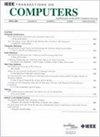Enabling Consistent Sensing Data Sharing Among IoT Edge Servers via Lightweight Consensus
IF 3.6
2区 计算机科学
Q2 COMPUTER SCIENCE, HARDWARE & ARCHITECTURE
引用次数: 0
Abstract
Blockchain offers distinct advantages in terms of data credibility and provenance certification, and its fusion with Internet of Things (IoT) technology holds great promise. Nevertheless, IoT environments are marked by extensive node networks and intricate communication patterns, especially the sensing environment. The conventional blockchain consensus mechanism, hampered by its heavy reliance on computing resources and communication bandwidth, faces difficulties in ensuring seamless data exchange among IoT edge servers. The issues encountered by state-of-the-art Byzantine Fault Tolerance (BFT) consensus include: (i) high communication complexity between nodes; and (ii) the detrimental impact of Byzantine behavior on system performance. To overcome the above problems, we propose the lightweight blockchain consensus called AntB, firstly introducing the concept of sampling into the consensus and significantly reducing the number of participating consensus nodes from通过轻量级共识实现物联网边缘服务器之间一致的感知数据共享
区块链在数据可信度和来源认证方面具有明显优势,与物联网(IoT)技术的融合前景广阔。然而,物联网环境的特点是广泛的节点网络和复杂的通信模式,尤其是传感环境。传统的区块链共识机制严重依赖计算资源和通信带宽,难以保证物联网边缘服务器之间的数据无缝交换。最先进的拜占庭容错(BFT)共识遇到的问题包括:(i)节点之间通信的高复杂性;(ii)拜占庭行为对系统性能的有害影响。为了克服上述问题,我们提出了轻量级的区块链共识AntB,首先将采样的概念引入到共识中,并将参与共识节点的数量从$N$显著减少到$N$,从而将共识复杂度降低到$\mathbf{2\cdot O(N) +O(N)}$。我们设计了一个动态声誉机制,使得拜占庭节点无法控制采样集来长期影响共识的活动。在实施AntB时,我们解决了三个重大的技术挑战:(i)为了确定最佳样本量,我们提出了一种基于统计置信区间的抽样计算方法,其中样本量主要由所选择的置信水平和误差范围决定;(ii)为了防止拜占庭行为,我们设计了一种加权随机抽样机制,利用基于边缘服务器行为的声誉系数;(iii)为了保持采样后的共识活动和一致性,我们提出了部分采样和全局验证的共识机制,以避免潜在的问题。我们在一个32核64GB内存的服务器上实现了AntB并进行了性能评估。评价结果表明,参与共识过程的节点越多,AntB的性能越好。特别是,与HotStuff相比,当节点数为300时,AntB的成功率提高了24.94%,TPS (Transactions Per Second)提高了102.10%。
本文章由计算机程序翻译,如有差异,请以英文原文为准。
求助全文
约1分钟内获得全文
求助全文
来源期刊

IEEE Transactions on Computers
工程技术-工程:电子与电气
CiteScore
6.60
自引率
5.40%
发文量
199
审稿时长
6.0 months
期刊介绍:
The IEEE Transactions on Computers is a monthly publication with a wide distribution to researchers, developers, technical managers, and educators in the computer field. It publishes papers on research in areas of current interest to the readers. These areas include, but are not limited to, the following: a) computer organizations and architectures; b) operating systems, software systems, and communication protocols; c) real-time systems and embedded systems; d) digital devices, computer components, and interconnection networks; e) specification, design, prototyping, and testing methods and tools; f) performance, fault tolerance, reliability, security, and testability; g) case studies and experimental and theoretical evaluations; and h) new and important applications and trends.
 求助内容:
求助内容: 应助结果提醒方式:
应助结果提醒方式:


